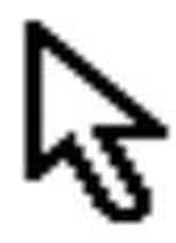Andy Pike - DirectX 8 Programming Tutorial
Здесь есть возможность читать онлайн «Andy Pike - DirectX 8 Programming Tutorial» весь текст электронной книги совершенно бесплатно (целиком полную версию без сокращений). В некоторых случаях можно слушать аудио, скачать через торрент в формате fb2 и присутствует краткое содержание. Жанр: Программирование, на английском языке. Описание произведения, (предисловие) а так же отзывы посетителей доступны на портале библиотеки ЛибКат.
- Название:DirectX 8 Programming Tutorial
- Автор:
- Жанр:
- Год:неизвестен
- ISBN:нет данных
- Рейтинг книги:5 / 5. Голосов: 1
-
Избранное:Добавить в избранное
- Отзывы:
-
Ваша оценка:
- 100
- 1
- 2
- 3
- 4
- 5
DirectX 8 Programming Tutorial: краткое содержание, описание и аннотация
Предлагаем к чтению аннотацию, описание, краткое содержание или предисловие (зависит от того, что написал сам автор книги «DirectX 8 Programming Tutorial»). Если вы не нашли необходимую информацию о книге — напишите в комментариях, мы постараемся отыскать её.
DirectX 8 Programming Tutorial — читать онлайн бесплатно полную книгу (весь текст) целиком
Ниже представлен текст книги, разбитый по страницам. Система сохранения места последней прочитанной страницы, позволяет с удобством читать онлайн бесплатно книгу «DirectX 8 Programming Tutorial», без необходимости каждый раз заново искать на чём Вы остановились. Поставьте закладку, и сможете в любой момент перейти на страницу, на которой закончили чтение.
Интервал:
Закладка:
{m_rX + (m_rWidth / 2), m_rY – (m_rHeight / 2), m_rZ – (m_rDepth / 2), 0.0f, 0.0f, 0.0f, 1.0f, 1.0f,}, //Vertex 6
{m_rX + (m_rWidth / 2), m_rY + (m_rHeight / 2), m_rZ – (m_rDepth / 2), 0.0f, 0.0f, 0.0f, 1.0f, 0.0f,}, //Vertex 7
//Face 2
{m_rX + (m_rWidth / 2), m_rY – (m_rHeight / 2), m_rZ – (m_rDepth / 2), 0.0f, 0.0f, 0.0f, 0.0f, 1.0f,}, //Vertex 8
{m_rX + (m_rWidth / 2), m_rY + (m_rHeight / 2), m_rZ – (m_rDepth / 2), 0.0f, 0.0f, 0.0f, 0.0f, 0.0f,}, //Vertex 9
{m_rX + (m_rWidth / 2), m_rY – (m_rHeight / 2), m_rZ + (m_rDepth / 2), 0.0f, 0.0f, 0.0f, 1.0f, 1.0f,}, //Vertex 10
{m_rX + (m_rWidth / 2), m_rY + (m_rHeight / 2), m_rZ + (m_rDepth / 2), 0.0f, 0.0f, 0.0f, 1.0f, 0.0f,}, //Vertex 11
//Face 3
{m_rX + (m_rWidth / 2), m_rY – (m_rHeight / 2), m_rZ + (m_rDepth / 2), 0.0f, 0.0f, 0.0f, 0.0f, 1.0f,}, //Vertex 12
{m_rX + (m_rWidth / 2), m_rY + (m_rHeight / 2), m_rZ + (m_rDepth / 2), 0.0f, 0.0f, 0.0f, 0.0f, 0.0f,}, //Vertex 13
{m_rX – (m_rWidth / 2), m_rY – (m_rHeight / 2), m_rZ + (m_rDepth / 2), 0.0f, 0.0f, 0.0f, 1.0f, 1.0f,}, //Vertex 14
{m_rX – (m_rWidth / 2), m_rY + (m_rHeight / 2), m_rZ + (m_rDepth / 2), 0.0f, 0.0f, 0.0f, 1.0f, 0.0f,}, //Vertex 15
//Face 4
{m_rX – (m_rWidth / 2), m_rY – (m_rHeight / 2), m_rZ + (m_rDepth / 2), 0.0f, 0.0f, 0.0f, 0.0f, 1.0f,}, //Vertex 16
{m_rX – (m_rWidth / 2), m_rY + (m_rHeight / 2), m_rZ + (m_rDepth / 2), 0.0f, 0.0f, 0.0f, 0.0f, 0.0f,}, //Vertex 17
{m_rX – (m_rWidth / 2), m_rY – (m_rHeight / 2), m_rZ – (m_rDepth / 2), 0.0f, 0.0f, 0.0f, 1.0f, 1.0f,}, //Vertex 18
{m_rX – (m_rWidth / 2), m_rY + (m_rHeight / 2), m_rZ – (m_rDepth / 2), 0.0f, 0.0f, 0.0f, 1.0f, 0.0f,}, //Vertex 19
//Bottom Face
{m_rX + (m_rWidth / 2), m_rY – (m_rHeight / 2), m_rZ – (m_rDepth / 2), 0.0f, 0.0f, 0.0f, 0.0f, 1.0f,}, //Vertex 20
{m_rX + (m_rWidth / 2), m_rY – (m_rHeight / 2), m_rZ + (m_rDepth / 2), 0.0f, 0.0f, 0.0f, 0.0f, 0.0f,}, //Vertex 21
{m_rX – (m_rWidth / 2), m_rY – (m_rHeight / 2), m_rZ – (m_rDepth / 2), 0.0f, 0.0f, 0.0f, 1.0f, 1.0f,}, //Vertex 22
{m_rX – (m_rWidth / 2), m_rY – (m_rHeight / 2), m_rZ + (m_rDepth / 2), 0.0f, 0.0f, 0.0f, 1.0f, 0.0f,}, //Vertex 23
};
//Get a pointer to the index buffer indices and lock the index buffer
m_pIndexBuffer->Lock(0, m_dwNumOfIndices * sizeof(WORD), (BYTE**)&pBufferIndices, D3DLOCK_READONLY);
//For each triangle, count the number of times each vertex is used and
//add together the normals of faces that share a vertex
for (i = 0; i < m_dwNumOfIndices; i += 3) {
dwVertex1 = pBufferIndices[i];
dwVertex2 = pBufferIndices[i + 1];
dwVertex3 = pBufferIndices[i + 2];
vNormal = GetTriangeNormal(&D3DXVECTOR3(cvVertices[dwVertex1].x, cvVertices[dwVertex1].y, cvVertices[dwVertex1].z), &D3DXVECTOR3(cvVertices[dwVertex2].x, cvVertices[dwVertex2].y, cvVertices[dwVertex2].z), &D3DXVECTOR3(cvVertices[dwVertex3].x, cvVertices[dwVertex3].y, cvVertices[dwVertex3].z));
pNumOfSharedPolygons[dwVertex1]++;
pNumOfSharedPolygons[dwVertex2]++;
pNumOfSharedPolygons[dwVertex3]++;
pSumVertexNormal[dwVertex1].x += vNormal.x;
pSumVertexNormal[dwVertex1].y += vNormal.y;
pSumVertexNormal[dwVertex1].z += vNormal.z;
pSumVertexNormal[dwVertex2].x += vNormal.x;
pSumVertexNormal[dwVertex2].y += vNormal.y;
pSumVertexNormal[dwVertex2].z += vNormal.z;
pSumVertexNormal[dwVertex3].x += vNormal.x;
pSumVertexNormal[dwVertex3].y += vNormal.y;
pSumVertexNormal[dwVertex3].z += vNormal.z;
}
//Unlock the index buffer
m_pIndexBuffer->Unlock();
//For each vertex, calculate and set the average normal
for (i = 0; i < m_dwNumOfVertices; i++) {
vNormal.x = pSumVertexNormal[i].x / pNumOfSharedPolygons[i];
vNormal.y = pSumVertexNormal[i].y / pNumOfSharedPolygons[i];
vNormal.z = pSumVertexNormal[i].z / pNumOfSharedPolygons[i];
D3DXVec3Normalize(&vNormal, &vNormal);
cvVertices[i].nx = vNormal.x;
cvVertices[i].ny = vNormal.y;
cvVertices[i].nz = vNormal.z;
}
//Get a pointer to the vertex buffer vertices and lock the vertex buffer
if (FAILED(m_pVertexBuffer->Lock(0, sizeof(cvVertices), (BYTE**)&pVertices, 0))) {
return false;
}
//Copy our stored vertices values into the vertex buffer
memcpy(pVertices, cvVertices, sizeof(cvVertices));
//Unlock the vertex buffer
m_pVertexBuffer->Unlock();
//Clean up
delete pNumOfSharedPolygons;
delete pSumVertexNormal;
pNumOfSharedPolygons = NULL;
pSumVertexNormal = NULL;
return true;
}
Step 3: Render
Our render function stays the same apart form two things, first of all, we need to tell DirectX that we want to render our polygons from an index buffer. We do this with a call to SetIndices, passing in the index buffer pointer that we want to use. Also, we need to use the DrawIndexedPrimitive method rather than DrawPrimitive to render our polygons.
//Select index buffer
m_pD3DDevice->SetIndices(m_pIndexBuffer, 0);
//Render polygons from index buffer
m_pD3DDevice->DrawIndexedPrimitive(D3DPT_TRIANGLELIST, 0, m_dwNumOfVertices, 0, m_dwNumOfPolygons);
To create our terrain, we will use the same techniques as we did to create our cube. The terrain will be made up from a 20×20 grid of quads (squares made up from 2 triangles). We will use an index buffer, which will reduce the number of vertices from 2400 to 441. I'm not going to post the code here because it is very similar to the code above. The only real differences are the way the index and vertex buffers are populated. You can download the full source code by clicking the "Download Source" link above. Fig 8.2 below shows our flat terrain grid. You can render your scene in "wireframe" mode with one simple call to SetRenderState which is also shown below.
//Set fill state. Possible values: D3DFILL_POINT, D3DFILL_WIREFRAME, D3DFILL_SOLID
m_pD3DDevice->SetRenderState(D3DRS_FILLMODE, D3DFILL_WIREFRAME);
Fig 8.2
Now that we have a flat grid, we can turn this into a simple terrain by setting a random value for y for each vertex. I've done this for each vertex in the grid except the ones that are around the edge so that the four edges are all the same level. If you want to create a more detailed terrain, have a look at http://www.gameprogrammer.com/fractal.htmlwhere there is a tutorial on how to generate a random fractal terrain. Fig 8.3 below shows the grid with random y values.
Fig 8.3
The last thing to do is apply a grass texture to the terrain and set the render state to solid rather than wireframe. Once you have done this, you should end up with a scene that looks like the screenshot below.
Читать дальшеИнтервал:
Закладка:
Похожие книги на «DirectX 8 Programming Tutorial»
Представляем Вашему вниманию похожие книги на «DirectX 8 Programming Tutorial» списком для выбора. Мы отобрали схожую по названию и смыслу литературу в надежде предоставить читателям больше вариантов отыскать новые, интересные, ещё непрочитанные произведения.
Обсуждение, отзывы о книге «DirectX 8 Programming Tutorial» и просто собственные мнения читателей. Оставьте ваши комментарии, напишите, что Вы думаете о произведении, его смысле или главных героях. Укажите что конкретно понравилось, а что нет, и почему Вы так считаете.









